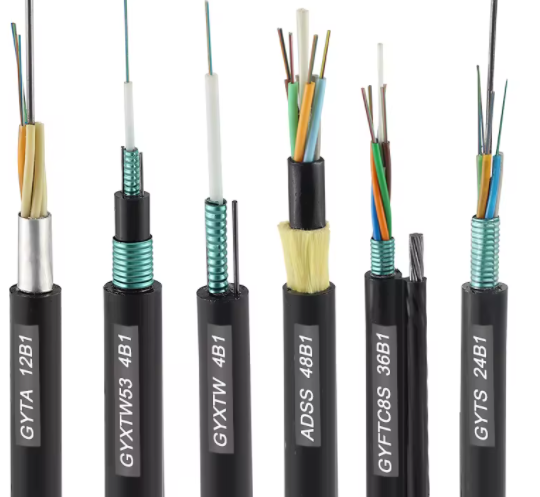Oufu Optical Fiber Cable Co.,Ltd
Address: Shenyang, Liaoning, China
Contact person: Manager Zhang
Phone: 400-964-1314
Mobile phone: +86 13904053308
【whatsapp && wechat】
2024-06-04 1486
Outdoor Fiber Optic Cable: Installation Steps and Maintenance Tips
Outdoor fiber optic cables are crucial components in today's telecommunication infrastructure, enabling high-speed data transmission and long-distance communication. However, to ensure optimal performance and reliability, proper installation and regular maintenance are essential. Here are the key steps for installing outdoor fiber optic cables and some useful maintenance tips.

Installation Steps:
1. Site Survey and Preparation
Before starting the installation process, conduct a thorough site survey to assess the terrain, obstacles, and environmental conditions. Ensure that the route is clear of any potential hazards or interferences. Prepare the necessary tools, equipment, and safety gear.
2. Cable Selection and Ordering
Based on the site survey, select the appropriate type and length of outdoor fiber optic cable. Consider factors such as the number of fibers, connector types, and environmental ratings. Order the cable from a reliable supplier and ensure its timely delivery.
3. Cable Unpacking and Inspection
Upon receiving the cable, carefully unpack it and inspect for any damage or defects. Check the cable length, connector types, and packaging for any discrepancies. If any issues are found, contact the supplier immediately.
4. Cable Laying and Routing
Begin laying the cable along the predetermined route. Use appropriate cable trays, conduits, or underground ducts to protect the cable from external damage. Ensure that the cable is not stretched or kinked during installation. Route the cable in a way that avoids sharp bends or excessive tension.
5. Connectorization and Termination
Prepare the ends of the cable for connectorization by cleaning and stripping the outer jacket. Attach the connectors according to the manufacturer's instructions, using precision tools and equipment. Ensure that the connectors are properly aligned and tightened. Terminate the cables with appropriate equipment, such as splice closures or distribution boxes.
6. Testing and Verification
After installation, perform thorough testing to verify the cable's performance. Use optical power meters, optical time-domain reflectometers (OTDRs), and other testing equipment to check for signal loss, continuity, and any potential faults. Ensure that the cable meets the required specifications and performance standards.
Maintenance Tips:
1. Regular Inspection
Inspect the outdoor fiber optic cables regularly to identify any potential issues or damage. Look for signs of wear, cracks, or damage to the cable jacket. Check the connectors for any dirt, debris, or corrosion.www.adsscable.cn
2. Environmental Monitoring
Monitor the environmental conditions around the cables, such as temperature, humidity, and water ingress. Ensure that the cables are not exposed to extreme temperatures or excessive moisture. Take appropriate measures to protect the cables from harsh environments.
3. Connector Cleaning
Regularly clean the connectors to remove any dirt, debris, or corrosion. Use a lint-free cloth and alcohol-based cleaning solution to gently wipe the connector surfaces. Ensure that the connectors are dry before reconnecting them.www.adsscable.cn
4. Avoid Excessive Bending
Avoid excessive bending or kinking of the cables, as this can cause damage to the fibers and affect the transmission quality. Ensure that the cables are routed in a way that minimizes sharp bends and excessive tension.
5. Timely Repairs
If any issues or damage are identified during inspection, perform timely repairs to restore the cable's performance. Replace damaged sections of the cable or connectors, as necessary. Use appropriate tools and equipment to ensure that the repairs are done correctly and safely.
By following these installation steps and maintenance tips, you can ensure the optimal performance and reliability of your outdoor fiber optic cables. Remember to always follow safety procedures and use appropriate tools and equipment for installation and maintenance work.